Hands On
- D.E. Bentley
Simple Tools and Steps
= Woodworking Fun

Slöjd (also spelled sloid or sloyd)—a Swedish word meaning handiwork or crafts—is also the name of an educational system created by Uno Cygnaeus in 1865. It incorporates increasingly complex exercises that offer opportunities to develop skills and confidence using simple tools. The objective is a more general education that goes beyond skill acquisition and touches on the development of the whole individual. Although traditional Slöjd began with the making of a Slöjd knife, the core principles have evolved to incorporate a wider array of tools and crafts.
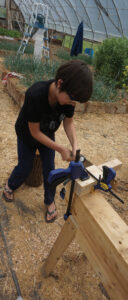
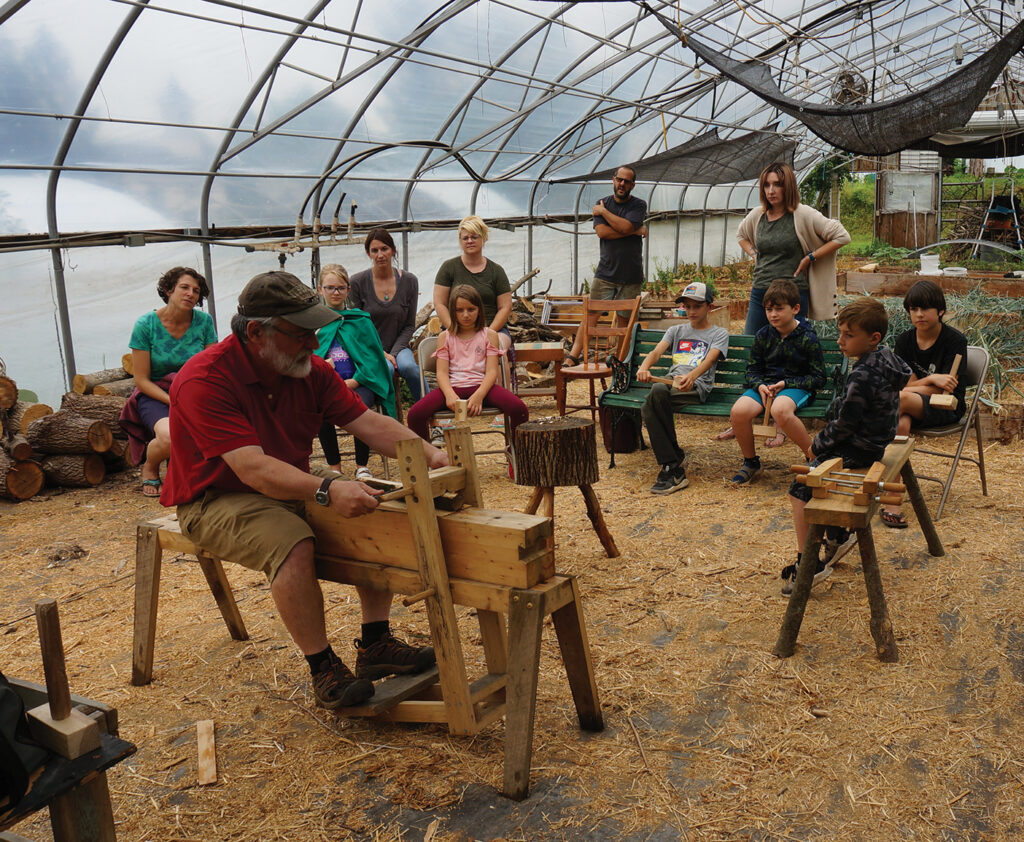
For Canadice woodworker Todd Touris, who enjoys working with hand tools—including Slöjd knives—an obvious extension to learning and growing in an art is sharing that passion with others. So, when an opportunity came up to do a woodworking project with a group of young people involved in a Richmond, NY 4-H group, in the spirit of Slöjd, he started enthusiastically planning. During two sessions in July and August 2021, Touris and I, along with eight young people and a handful of parents, spent time together working with wood—turning trees into utilitarian objects.
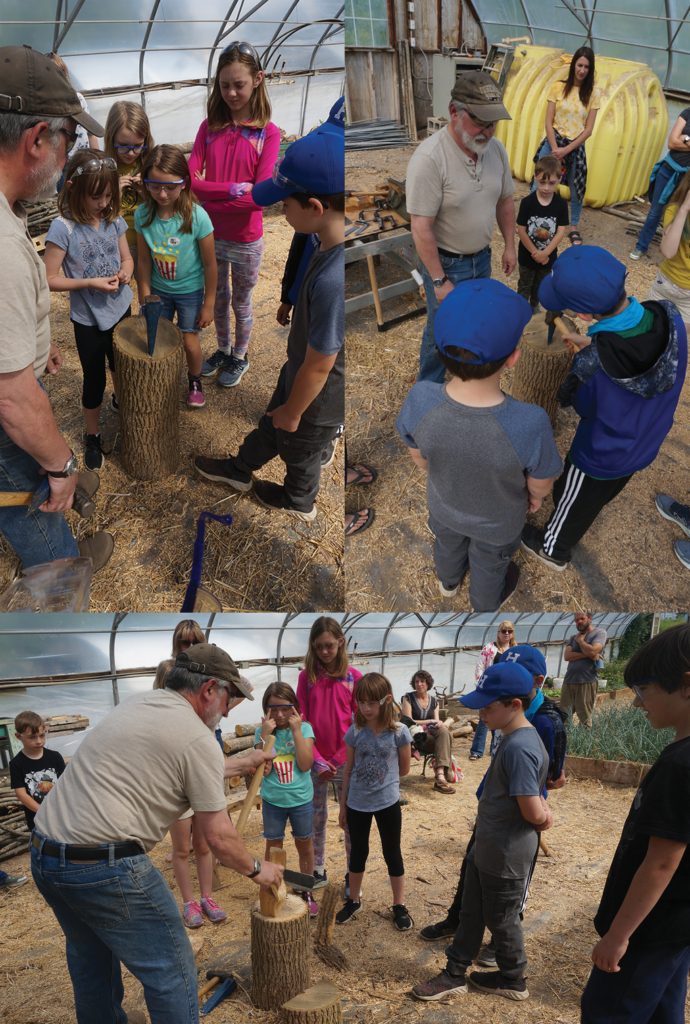
Many woodworking classes begin with lumber dimensioned to standard sizes. The first step for the 4-Hers was to split a section of log into squares using a splitting wedge and hammer, and a froe. Although it took a moment for volunteers to step forward, all quickly got into the swing of things. Using split pieces of ash (for the heads) and cherry (for the handles), the youth then sawed, planed, cut mortise and tenon joints, and glued together their mallets.
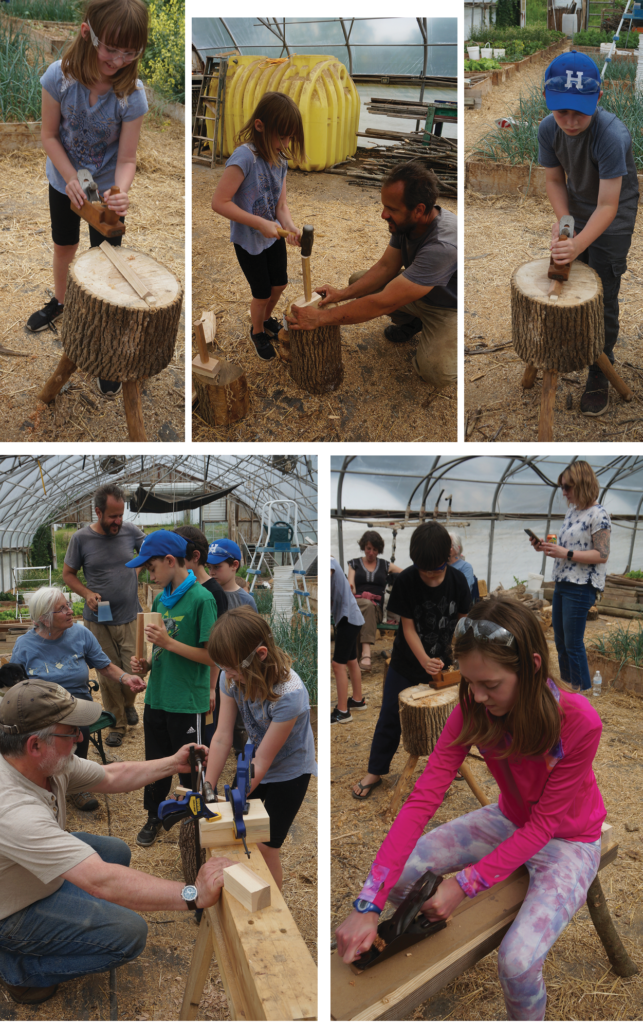
With mallets in hand, the group returned for session two and quickly settled into the tasks at hand. A spirit of cooperation was immediately evident as they helped each other through the steps of making wooden stools. Although many of the tools had been previously introduced, after a demonstration, everyone took a turn on the shaving horse to try out the drawknife, shaping split pieces and branches of ash into stool legs. They mortised three holes in cut slabs of Norway spruce and tenoned the legs. Then out came the mallets, as legs were pounded in and wedges were put in place.
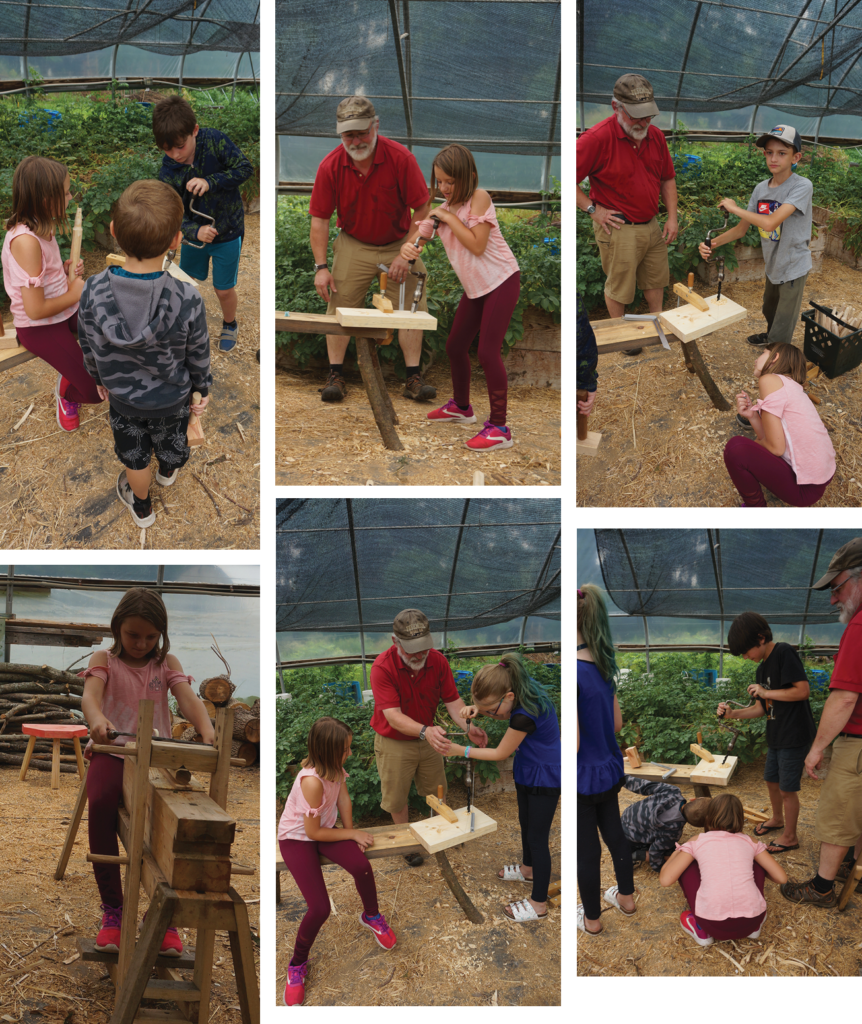
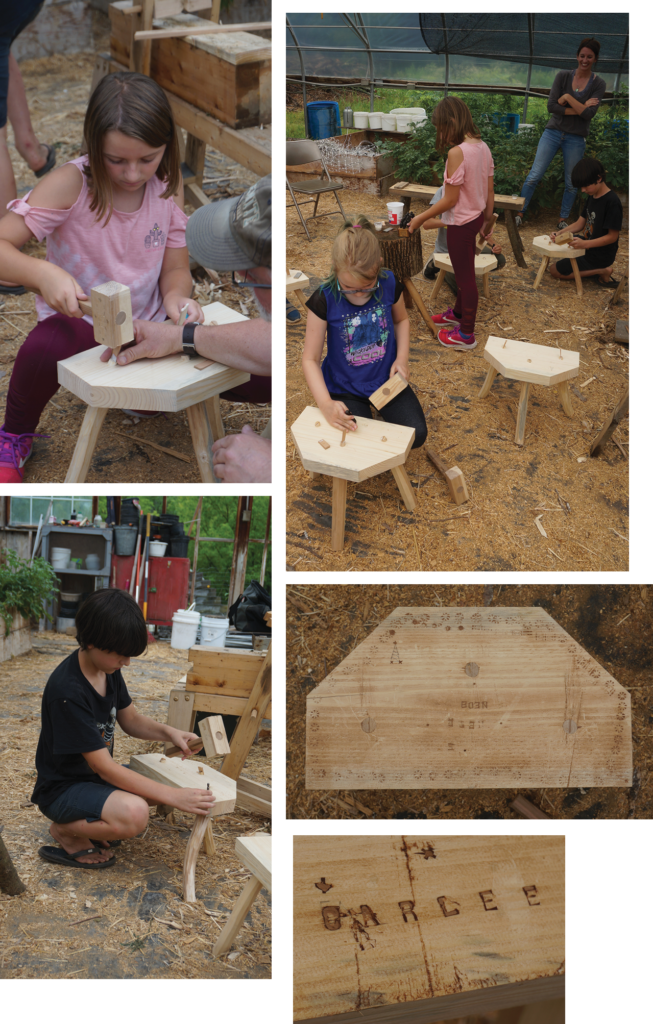
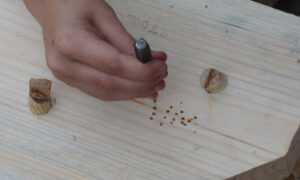
Although many early Slöjd pieces were utilitarian, they were often decorated with carvings, punched designs and colorful finishes. Participants used punches, and mallets, to add individualized details to their work. This was a skill that had also been introduced during the first session, when the participants used letter stamps to add names to their mallets. The punched designs on the stools were then embellished with cocoa powder rubbed into the impressions.
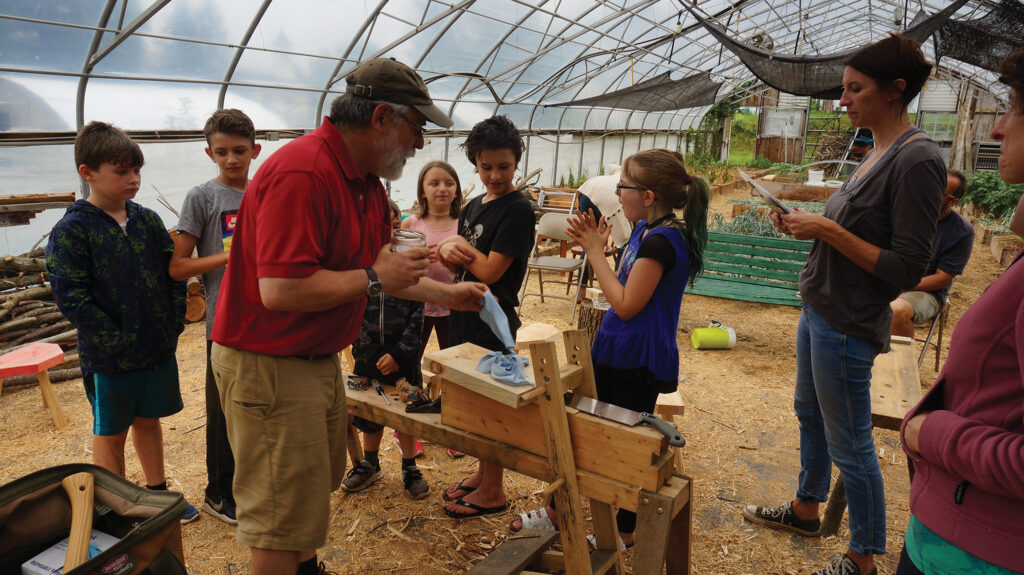
The final step in the day’s work was to wipe the assembled stools with a shellac finish. The heavy rain outside the greenhouse—where we had set up shop—was attracting the attention of the wood-weary youth. Nonetheless, everyone’s interest was piqued with Touris’ introduction to shellac, a naturally-derived furniture finish. Shellac, as many may not be aware, is the secretion of the lac bugs (native to India and Thailand). Its uses include food-grade applications, including serving as the outer shell on M&Ms and other coated candies.
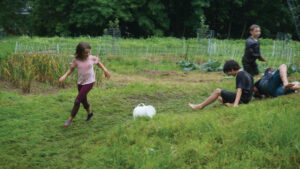
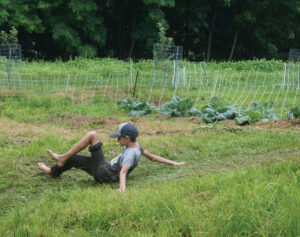
By this time, the mud-slicked hill outside had fully captured the attention of the woodworkers and spins in the rain quickly morphed into an experiment in friction (or lack thereof) and objects in motion. Soon everyone was standing in the rain (including the adults) as youth catapulted down the slick hill, the focused attentiveness to handiwork replaced with reckless abandon.